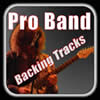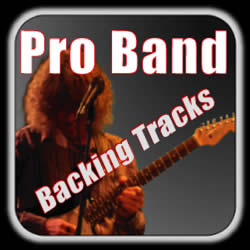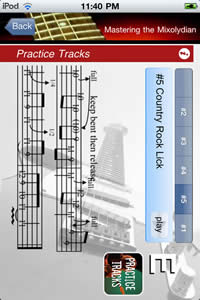

Pro Bass
Available Lessons |
| Pro Bass Free App |
25 Shuffle Blues Bass Lines |
25 Slow Blues Bass Lines |
| 25 Funk Blues Bass Lines |
| 25 Rock Blues Bass Lines |
| The 4-Style Blues Bass Line Bundle |
| Testimonials |
|
Try the blues backing tracks minus the bass! |
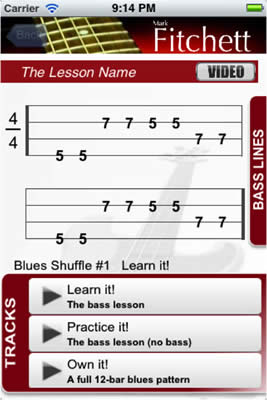 |
 |
One of the best places for an aspiring bassist to start is on the blues since so much popular music is based on this classic American idiom.
In the free version of Pro Bass you will learn four classic blues grooves and bass lines; shuffle, slow 12-8, funk and rock. These lines can be used in blues or be applied to anything that needs a melodic supportive bass line. Apply your own creative variations and the possibilities are limitless!
PRO BASS FEATURES
+ Classic bass lines
+ Multiple styles
+ Melodic bass lines
+ Scales and patterns
+ Active scrolling Tab
+ Tab in all keys
+ Audio in all keys
+ Audio slow down
+ Audio looping
+ Practice play along tracks minus the bass
(Includes bonus tempo and pitch control as well as scrolling chord chart)
PRO BASS STORE:
+ 25 Shuffle Blues Bass Lines
+ 25 Slow Blues Bass Lines
+ 25 Rock Blues Bass Lines
+ 25 Funk Blues Bass Lines
+ Bundle of all 4 Blues Bass Lines
Pro Bass teaches you how to play something immediately useful in a practical musical situation, and gives you the tools, techniques and lines to step your bass playing up to a pro level.
With Pro Bass you LEARN IT, PRACTICE IT, and ultimately OWN IT!
A great teach yourself to play app by Crazy Mazy - Version 1.0 - Oct 20, 2012
As someone starting from scratch I found this to be a great teaching app. The fact you can adjust the tempo of the music is very helpful so you can learn at a pace that is comfortable to you.
The only thing I would say it is lacking is a simple explanation of what every thing means. I was lucky as I was able to guess what the numbers meant (frets) and that the bottom string of the picture meant the top string on the bass. Maybe there is an explanation on there somewhere, but if there is and I couldn't find it despite looking, then that could be fixed too.
(Mark's note: This app assumes someone knows about tab. This customer figured it out pretty quick it seems.)
But apart from that I highly recommend this app for beginners. Easy to use and adjustable to your level. More lessons are available as an in app purchase, but they are all reasonably priced and can be bought as a package or as individual lessons. Thank you for making this app!
Excellent Skills Building Approach by Doug Thorsvik - Version 1.0 - Oct 23, 2012
The four free lessons are challenging and fun. I am working on all of them. Being able to change the key and tempo make the lessons adaptable and doable.
The continuous looping of the lesson is a great aid to mastery. I love the extended playing with the band on the 12-bar arrangement.
The Bottom Line: this app is much more useful than any book/CD combo I currently have. I plan to purchase the extra lessons when I'm ready.
zzzzzzzzzzzzzzzzzzzzzzzzzzzzzzzzzzzzzzzzzz
About the Tracks
Mastering the Minor Pentatonic
how to play licks in all 5 of the Emi pentatonic patterns Volume 1
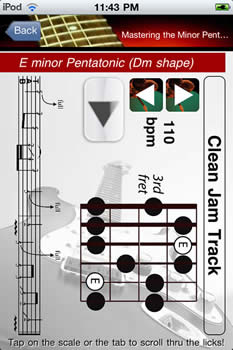 |
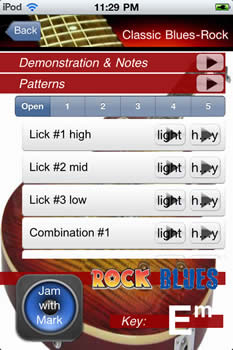 |
|
Watch Mark Play in all 5 patterns |
Why These Lessons?
Even if you are just starting to learn to play lead guitar and improvise, this video series will put you on the fast track to learning how to solo in all positions and patterns up and down the neck effortlessly. I will teach you the patterns and licks in a simple, easy to understand fashion so you can start using them right away.
| Mark talks about the soloing dilema most guitarists face | |
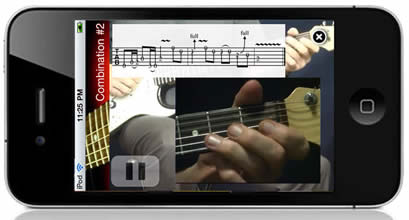 |
The Dilema
I can’t tell you how many guitarists have come to me knowing how to improvise a decent lead guitar solo, but really only know how to play in a couple of places on the neck. Some haven’t realized yet that there are five patterns available, while others know them but I usually hear something like “I can play the other patterns, but I can’t seem to make them sound like something.”
After going through these lessons a couple of times, I believe you will be amazed at how easy it is, with a little practice of course, to play anywhere on the neck and sound great.
Why the Minor Pentatonic Scale?
One of the first stops on the road to blues and rock soloing mastery is the minor pentatonic scale, a must have staple in every soloist’s arsenal. Regardless of the fact that there are many scale choices, this particular scale works so well over so many different styles and chord changes, that it is some times referred to as a blanket scale.
Even in non-minor chord situations as in the case of innumerable guitar-driven songs, the minor pentatonic is the primary sound. You will hear it over and over again in countless legendary recordings and performances throughout the history of rock and blues guitar. E is also one of the most popular keys on the guitar and often the first place many guitarists learn to solo in.
Video Lesson Explanation
In each pattern I will play three short licks, one on the top, one in the middle, and one on the bottom, and then play two combinations of all three licks. The tab and the scale patterns can be pulled up at your convenience and you can loop the video so you can play along until you feel comfortable with each lick.
The ideas presented here are meant to show you ways to get started playing and sounding great in all five of the E minor pentatonic patterns available on your guitar. I have purposefully kept most of the lick ideas relatively slow and short although there may be a couple tricky fingerings here and there.
Feel free to shake things up as you get comfortable in each area. Some things you might try are; different rhythmic approaches, playing faster or slower, creating longer or shorter phrases, changing the order, adding or subtracting notes, adding notes from the blues scale, adding more or less vibrato, slides, hammer-ons, pull-offs and bends.
Use whatever fingering is comfortable to start with. You’ll notice in these examples I don’t use the pinky much because in this style I am somewhat emulating guitarists such as Clapton and Hendrix and many of the rock and blues guitarists who rarely used that finger for lead guitar. That being said, I do use my pinky a lot in other situations and encourage you to work at getting it stronger.
Also, I have provided two different backing tracks and guitar sounds for you to hear these examples; a funky/bluesy groove using a gritty blues lead sound, and a hard rock slow jam with a much heavier lead guitar sound. This will hopefully start to give you an idea of the versatility of this scale. These two tracks are also included for you to jam along with.
For those of you that want to explore more music to solo over, check out my Pro Band Backing Tracks/E minor Pentatonic Soloing Collection, which features 16 tracks of assorted blues and rock styles where you can use the E minor pentatonic as the primary scale to solo with and immediately sound great. This App also has the ability to change keys and tempos so you really get a chance to work your new licks in different keys.

xxxxxxxxxxxxxxxxxxxxxxxxxxx
Mastering the Mixolydian: Volume 1
You’ve got that minor pentatonic/blues scale down and dirty, but you can tell there’s still something missing! I’m talking about those sweet tones you hear the legends nail time and time again; the 9th, the 6th and most outstanding, the major 3rd. Their secret down-home ingredient? The Mixolydian scale! Start smearing this tasty Southern fried country, rock, blues sauce on your licks and watch them start to sizzle and smoke. You’ll be cookin’ in no time. Licking fingers good!
To get you used to how to work with the Mixolydian scale, learn these five “anchor” licks for E7, played around the chord shapes C7, A7, G7, E7 and D7. This covers the entire guitar for the E7 chord and the E Mixolydian scale.
These licks will teach you some classic “Mixolydian moves” used in rock, blues, funk, and country. To demonstrate the versatility of this scale, there will be a different rhythm track behind each example so you can hear it different styles.
A separate audio track of each example, and all five rhythm tracks (both with looping and tempo change options), are included so you can practice each one of the five licks in different styles and at different tempos.
Much emphasis has been placed on the 3rd of E7 (G#), as this is considered a primary target tone. Feel free to experiment. Change the note order, rhythms and speed. Try each lick on all five of the backing tracks. Bends, slides, vibratos, combining positions, hammer-ons and pull-offs are all fair game. Another little trick: Combine the E minor and E major pentatonic scales, the E blues scale and the E Mixolydian to get the ultimate smorgasbord of tasty licks.
Descriptions
D7 Shape: Funk
Many a rock band from Aerosmith to Zeppelin has delved in the syncopations of funk.
C7 Shape: Rock
Straight ahead rock and roll
A7 Shape: Blues Shuffle
The blues is a great place for the Mixolydian. This example just stays on the first chord of a 12-bar blues. In an actual progression when the chord changes, the soloist has to as well.
G7 Shape: Country Rock
Think Southern rock and country, but even bands like the Stones and the Beatle’s incorporated this scale and these types of licks.
E7 Shape: Slow Rock
Arena rock slow rock ballad
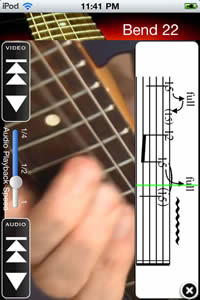 |
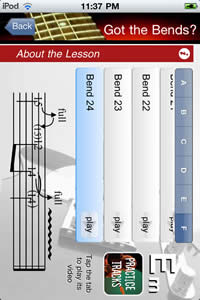 |
The spotlight is on! Step up to take your solo, throw your head back, start pushing those strings into the stratosphere and make your guitar cry and moan! There’s nothing like the feel and emotion that can be wrung out of your axe by string bending – the heart and soul of modern blues and rock soloing. Evoke the passion of Hendrix, SRV, BB King and countless legends in your solos. Bottom line this is an outrageous set of bends. You can't live without it. Just buy it and you'll thank me later.
 |
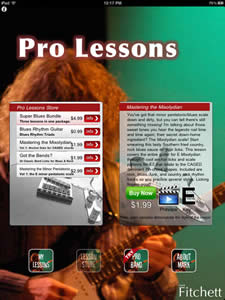 |
If you are tired of the same old rhythm patterns in your blues, then it’s time to hop on these classic rhythm slides and hear yourself slip into something a little more uptown and jazzy. This Pro Lesson demonstrates the slides on string set 1 (EBG), and string set 2 (BGD) in three positions. There is a medium shuffle and a slow blues version. These examples all fit over an E7 chord. Note: When you play these in a standard blues progression you will have to move with the chord changes E7, A7 and B7. Theory stuff: Technically speaking we are using (low to high) a Bmi and C#mi triad superimposed over an E7. In relation to E7, this implies E9 and E6. The two triad’s notes added up imply E13.

